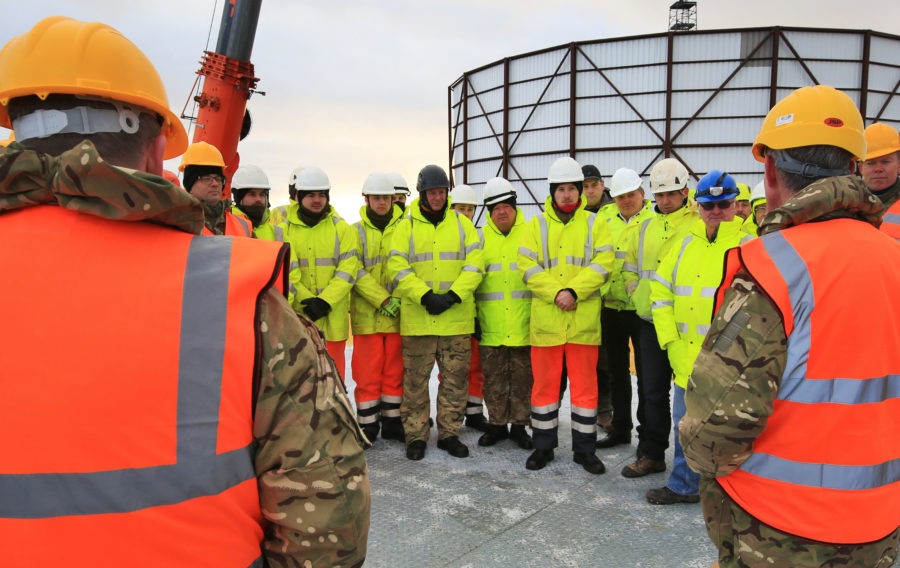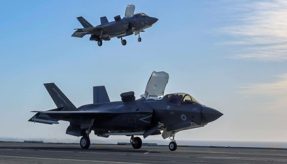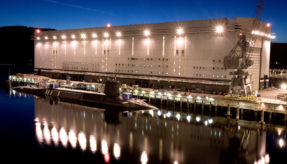
As tensions between the West and Russia continue to mount, the Ministry of Defence is taking steps to protect the UK’s Northern airspace.
The construction of a new £10 million RAF radar facility at Saxa Vord in Shetland will improve RAF and NATO understanding of the airspace north of Britain and further out across the Norwegian Sea, reinforcing the UK’s ability to track unidentified military or civilian aircraft.
The facility will provide key information on aircraft movements to the north of the UK and feed the nationwide Quick Reaction Alert (QRA) operation which is responsible for policing international and UK airspace from RAF Lossiemouth in Moray and RAF Coningsby in Lincolnshire, as well as supporting civil air traffic control.
The project was initiated by Air COS Cap, Air Vice-Marshal Rochelle, on 3 July 2017 and will see the island return to the role of an early warning radar on NATO’s northern flank.
The location of the facility and severe wintery weather conditions meant that construction on the project proved to be incredibly challenging.
Transportation to the site provided a logistical nightmare, with three ferries required to access Unst from the Scottish mainland and the final ferry to Unst only capable of carrying a single 40-foot-long articulated lorry.
To tackle this, transportation movements were scheduled to avoid peak times and conducted in stages where necessary.
Extreme winds were a continued reoccurrence, meaning that cranes could only operate at wind speeds up to around 20mph; for the first ten weeks since site mobilisation in early September 2017, the crane could not be used.
Winds regularly exceeded 60mph, which was the speed at which all outside work had to stop, and the site was evacuated at 70mph. Winds often reached 100mph, and on a couple of occasions hit highs of 130mph.
In order to overcome these difficulties, the RAF’s Mobile Meteorological Unit (MMU) was deployed to the site with a professional forecaster and fully fitted weather station to provide on-site weather forecasting, providing much needed warnings of potentially dangerous phenomena such as lightning and extreme winds. This enabled advanced planning of work when winds were acceptable, irrespective of day or night, thus requiring constant irregular shift changes for the workforce.
The most critical part of the whole project was the big lift of the radar and the radome (the dome that protects the radar) onto the tower which could only happen at wind speeds of less than 8.5mph, a rare occurrence at Saxa Vord in the winter.
A steel windbreak was constructed (20 metres high by 22 metres diameter) to protect the radome and workers during construction. The construction of the radome took place inside this specially made steel windbreak, before it was craned onto the radar tower.
Alternative safe methods of working were also developed to enable construction without the use of a crane – although less productive, this did ensure work was able to continue during periods of adverse weather.
Defence Equipment and Support’s (DE&S) Air Defence & Electronic Warfare Systems (ADEWS) team delivered the new infrastructure and capability for the RAF, commissioning much of the work through Foreign and Commonwealth Office Services, with assistance from the RAF’s 90 Signals Unit from RAF Leeming, whose rigging and radome construction expertise saw the radome constructed in less than 48 hours.
The site was also struck repeatedly by six-inch snowfalls, hail and thunderstorms.
Despite these weather conditions, the ADEWS team, working with many stakeholders operating as a single coherent team, revitalised this facility in just seven months when similar projects take around 24 months, and in far more hospitable weather conditions.
Air Chief Marshal Sir Stephen Hillier, Chief of the Air Staff, was keen to pay tribute to the construction team’s efforts to keep on track: “The radar system at Saxa Vord is an important part of ensuring that the RAF can fully protect both the UK’s airspace and that of our NATO allies, in the face of increasing pressure from Russia.
“Right at the tip of Shetland, Saxa Vord is a very remote site, so I’m extremely grateful to the team who have been working hard through the cold of winter, with snow and 120mph gales, to ensure that the construction has remained on schedule.”
Saxa Vord is being seen as an exemplar site for the delivery of an air defence radar facility. The radar picture is delivered to the Control and Reporting Centres at RAF Boulmer (Northumberland) and RAF Scampton (Lincolnshire), from where routine performance will be monitored and managed. However, at least two specialist radar contractors are expected to remain on the Shetland Islands who will attend the site for maintenance support and to maintain the high availability requirement. Periodic visits by other engineering personnel will continue to be necessary to support the site’s operational role.
During the last five years, the RAF has carried out 69 Quick Reaction Alert (QRA) launches. In January, two Typhoon aircraft from RAF Lossiemouth were scrambled to intercept two approaching Russian military aircraft, which did not respond to the air traffic control authorities.
The RAF monitored the Blackjacks as they passed through international airspace, before escorting the Russian jets out of the UK’s area of interest.
Air Commodore Mark Chappell, Commander of the RAF’s five Typhoon squadrons, explained: “The QRA is the UK’s first line of defence from any air threat that enters UK airspace, and it operates 24 hours a day, seven days a week. This requires the whole force – not just the aircraft and pilots, but the engineers and all support staff – to deliver the readiness required.”
The facility at Saxa Vord is scheduled to reach Full Operating Capability at the end of October 2018.
image © Crown Copyright
If you would like to join our community and read more articles like this then please click here.







